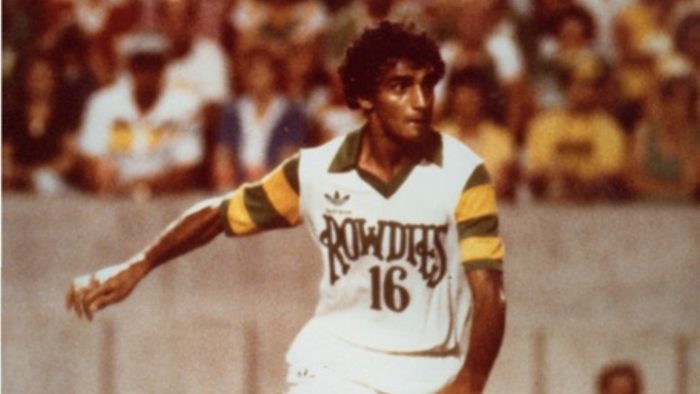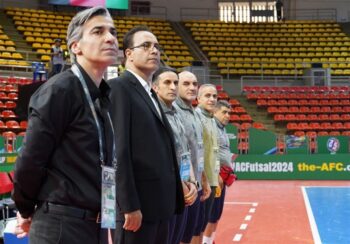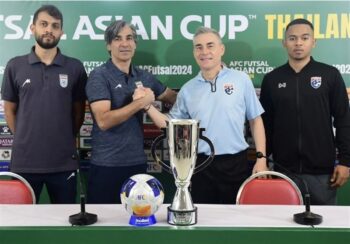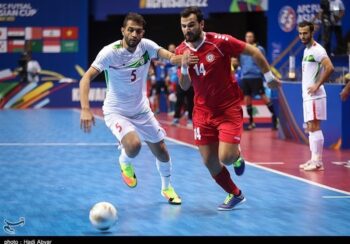Wanderin’ around the world: Iran

WycombeWanderers.co.uk – WYCOMBE, As we continue our series in the international break, we learn how Ryan Tafazolli isn’t the first Iranian player to represent the Chairboys.
Even today there are very few Iranian players who have tested themselves in English football. While Karim Bagheri was the first Iranian to play in the Premier League, and Ryan Tafazolli currently starring in the Wycombe backline, one-time Chairboy Farrukh Quraishi probably has a fairly good claim to be the first Iranian footballer to play in the United Kingdom.
Born in south west Iran in 1951, Quraishi came to prominence as a footballer in the United States during the 1970s, where he played for Tampa Bay Rowdies in the National American Soccer League. Although born in Iran, he was raised in London and impressed the coach of a touring college side from New York, Oneonta State, leading to him crossing the Atlantic to play the game.
Quraishi excelled and won the prestigious Hermann Trophy in 1974, awarded to the best player nationally in the college system – an honour won in 1986 by another Blue, John Kerr, and by renowned names such as Brad Friedel, Claudio Reyna and Alexi Lalas. As a result of his progress, Quraishi became the No. 1 pick in the 1975 NASL draft and was taken on by Tampa Bay Rowdies.
His debut year with the Rowdies continued his rapid rise and he ended it by being called into the NASL All Star Team. However, from that peak, things began to take a turn for the worse for the youngster. Also still studying at Oneonta – he graduated with a degree in sociology in 1976 – his game time with Tampa reduced year on year and he missed the entire 1978 season after suffering a broken leg.
That piece of information is particularly disappointing to Wanderers supporters as he left Wycombe in January 1978 to specifically play in the 1978 NASL campaign. After signing on a non-contract basis early in the 1977-78 Isthmian League campaign, Faroukh became a regular and important member of John Reardon’s side, versatile enough to hold the midfield or plug defensive gaps.
Having returned to England for a trial with Southampton, he only made it as far as their reserve side, while a stint with Slough Town also preceded his arrival at Loakes Park. Joining him as a new recruit for the Blues was Roger Day, and the pair of them made their bows away at Staines Town on September 13th 1977 in a game that the Blues won 3-1.
Over the remainder of that month he was a regular fixture in the Chairboys’ midfield, with his moments of skill and creativity often helping the club out of a tight spot. However, it was his exit that saved the day at Kingstonian as he came off to be replaced by Tony Horseman, who promptly snatched an equaliser to prevent a four-game winning streak ending with defeat.
Most comfortable in midfield, injury problems around the Blues’ squad often meant the Iranian had to help manager Reardon out by switching to alternative positions, at one time or another covering both the full-back spots of Bob Davies and Paul Birdseye. The return from injury of fellow midfielder Mick Holifield during October looked to have cost him his place, but instead Reardon pushed Holifield forward and restored Quraishi to midfield – resulting in a thumping 4-0 home win over Staines.
That match probably provided the best opportunity for Quraishi to get on the scoresheet for the Blues, but he blazed over the bar late on with Wycombe already 4-0 up. While he did not manage to score for the Wanderers, he was certainly a valuable asset during his brief stay in Bucks, during which he amassed 15 appearances.
The low point of his Wycombe career came in November as the Blues, chasing glory at the top of the Isthmian League, travelled to Minehead in Somerset for an FA Cup tie with a club struggling in the Southern Premier League. With confidence high and a taste for facing Football League clubs in the famous competition, fans travelled in expectation but headed home disappointed after a shock 2-0 loss.
Another moment to forget came away to Witney Town in December 1977 when, during a skirmish for the ball, Quraishi managed to accidentally kick and injure his team-mate John Priestley, leaving the bruised Blue to be subbed off before the break and replaced by Alan Phillips. It was to be one of his last appearances for the club as the turn of the year saw the countdown to his exit begin.
As he headed back over the Atlantic in late January to resume his Tampa Bay Rowdies career, team-mate Steve Vass also departed to take a coaching job in Bahrain, leaving manager Reardon with a squad of just 15 players, two of whom were goalkeepers. With the hindsight knowledge of the broken leg that would ruin his 1978 NASL campaign, perhaps it would have been best for all parties had Quraishi remained at Loakes Park.
Back in the States he returned for the 1979 season but injuries again hampered his career and the 1980 term saw him manage just nine outings for the club, where his team-mates over the years included ex-Wycombe manager John Gorman, Rodney Marsh, Clyde Best and Brazilian World Cup winner Clodoaldo. By the 1981 term he had moved on to Calgary Boomers, but after one season in Canada he decided to call it a day and retired at the tender age of 30.
Far from resting on his laurels, Quraishi began a second career in football administration. Having already acted as the Rowdies’ director of youth development, he went on to play an integral role in building youth teams and leagues in the Tampa area and when the 1994 World Cup came to the US he was appointed Executive Director of the Orlando venue.
Following the World Cup, he was involved in the start-up of America’s new professional league and was appointed President of Tampa Bay Mutiny in the newly-created Major League Soccer division. He remains involved in soccer administration and management, working with amateur clubs in the United Soccer Leagues, including, over the years, Boston Bulldogs and Cape Cod Crusaders.


 (7 votes, average: 4.43 out of 5)
(7 votes, average: 4.43 out of 5)

